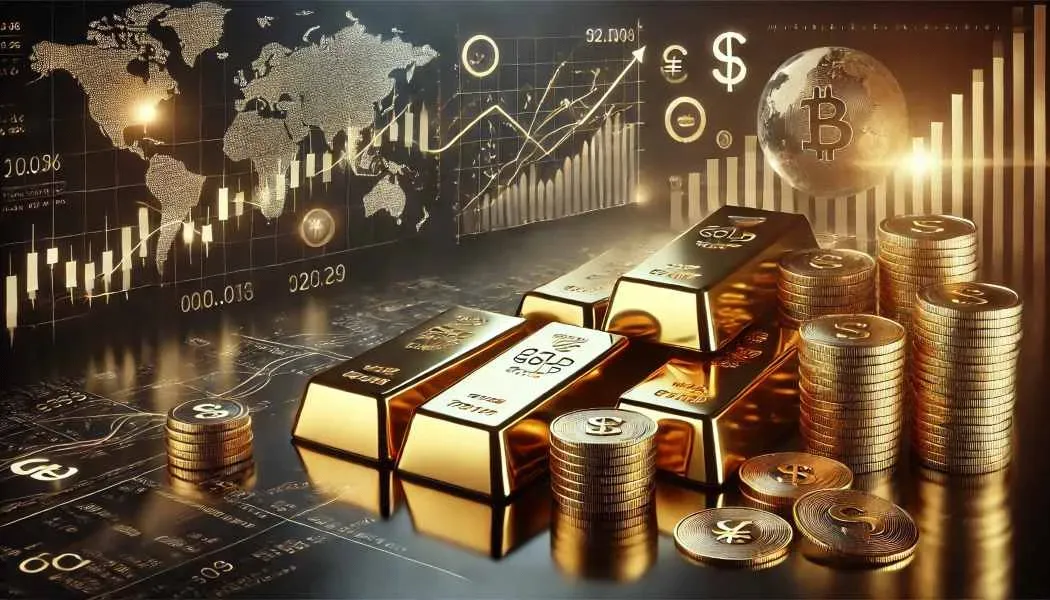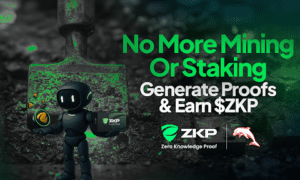Gold and silver prices have soared in 2025, with gold smashing through $4,000 per ounce and silver leaping past $50. These moves have people talking, as big banks and metals experts are floating even higher targets.
Both Bank of America and Goldman Sachs now project gold could reach $5,000 per ounce by 2026, while some analysts believe silver could climb to $100 per ounce during the same timeframe. These are hefty jumps from where we are now, but they’re not totally out of left field if you look at past bull runs in metals.
Whether we actually see those numbers depends on a cocktail of factors. Central bank policies, inflation, global tensions, supply snags, and changing investor habits are all in the mix. It’s a lot to weigh if you’re thinking about how to play your cards in this market.
Gold Price Outlook: Could $5,000 Per Ounce Be Next?
Gold just notched new records, trading above $4,100 per ounce in recent sessions. Major banks like Bank of America and Goldman Sachs are now calling for $5,000 gold by 2026.
Recent Gold Price Movements
On October 14, 2025, gold hit an all-time high: $4,179.48. That’s almost a 60% jump since the start of the year.
The $4,000 barrier fell on October 8, and gold has kept climbing since. It’s been a wild run.
Momentum’s coming from a few angles. Trump’s new tariff threats on China have sent investors running for safety. Plus, folks are betting on U.S. rate cuts, which only adds fuel to gold’s fire.
Gold’s left most other assets in the dust this year. Demand from prominent investors and central banks just won’t quit.
Key Drivers Supporting Higher Gold Prices
Several forces are keeping gold strong. Uncertainty about what the Federal Reserve will do next is probably the biggest concern.
Central banks keep buying at a solid pace. Many countries want fewer U.S. dollars and more gold in their reserves.
Geopolitical drama adds another layer. Trade spats between the U.S. and China, for instance, push more people toward gold.
Investment flows could ramp up even more. Goldman Sachs says that if just 1% of private U.S. Treasury holdings were to move into gold, we’d be looking at nearly $5,000 per ounce.
On the supply side, mines are struggling to keep up. Production just isn’t matching up to growing demand worldwide.
Expert Projections and Timelines
Bank of America has raised its 2026 gold forecast to $5,000 per ounce, with an average around $4,400. That’s a bold call.
Goldman Sachs is also in the $5,000 camp, but it’s conditional—depends on Fed policy staying murky and institutions staying hungry for gold.
Société Générale analysts say even conservative growth in investment demand could take us to $5,000 by late 2026. They point to that recent $4,000 breakout as a sign of real momentum.
Key Price Targets:
- Bank of America: $5,000 peak, $4,400 average for 2026
- Goldman Sachs: $5,000 under specific conditions
- Technical analysis: $4,300-$4,470 near-term targets
Most analysts expect choppy action in the short term. Still, the long view looks pretty bullish for gold through 2026.
Silver Price Forecast: Assessing $100 Per Ounce
Silver is trading above $51 per ounce and knocking on the door of all-time highs. It’s up 60% in just six months. Some are calling for $100 silver by 2026, though most big banks are a bit more measured.
Historical Silver Price Trends
Silver’s had its share of wild swings. Back in 2011, it hit about $50 per ounce during a massive rally.
This current run kicked off in 2024. Since then, silver’s outpaced gold—up 60%, while gold’s only managed 20% over the same stretch.
Key Historical Milestones:
- 2011: Previous peak around $50/oz
- 2020-2023: Gradual recovery phase
- 2024-2025: Strong rally phase
The Shanghai Metals Market says global silver mine supply has shrunk by about 0.9% a year since 2020—meanwhile, demand’s heating up, especially in tech and green energy sectors.
This supply squeeze is helping prop up prices. Plus, new demand from AI and semiconductors is boosting silver beyond the usual safe-haven buying.
Silver’s Relationship With Gold
The gold-to-silver ratio is a handy gauge for silver’s potential. Right now, it’s still high, but it tends to bottom out every five years or so.
The next significant low in that ratio is likely in the first half of 2026. If it breaks down, silver could blast through $50 and maybe head for $60 or more.
Traditional Ratios:
- Historical mining ratio: 8-9 ounces of silver per 1 ounce of gold
- Current market conditions favor ratio compression
Some take the ratios to extremes—Keith Neumeyer, for example, says silver could hit $1,000 if gold reaches $10,000. That’s a stretch, but it shows how wild these projections can get.
Goldman Sachs has gold at $5,000 by 2026 in their forecasts. If you run the historical relationships, silver should be much higher than it is now, even if not quite $100.
Analyst Predictions for Silver
Most big banks have bumped up their silver targets, though $100 is still pretty rare. The upgrades reflect stronger fundamentals and overall momentum in metals.
Current Bank Forecasts:
- UBS: $55 by mid-2026 (up from $47)
- Bank of America: $65 average for 2026
- Citigroup: $55 near-term target
Philippe Gijsels at BNP Paribas is the most bullish, saying $100 is possible by the end of 2026. He’s worried about inflation and sees safe-haven demand picking up.
Peter Grandich is also on the triple-digit train, tying it to U.S. economic headaches and a weakening dollar. Still, these are outliers—most analysts are more cautious.
The consensus? Silver is expected to be between $50 and $65 per ounce through 2026. Fed policy, dollar weakness, and industrial demand are the main drivers pushing things along.
Macroeconomic and Monetary Forces Driving Precious Metals
Rising inflation expectations and aggressive central bank gold buying are shaking up the precious metals world. The U.S. dollar’s been losing steam, and significant economies are actively moving away from it, which adds more pressure on gold and silver.
Impact of Global Inflation
Inflation expectations are the main engine for precious metals. Gold and silver usually shine brightest when inflation’s running hot, as people look for ways to dodge currency erosion.
The Consumer Price Index and gold prices tend to move together. When inflation expectations rise, metals usually follow suit not long after.
Current inflation dynamics include:
- Central banks aiming for 2% inflation
- Commodity prices are rising in energy and food
- Monetary base expansion is still rippling through the economy
The gold-to-inflation expectations ratio shows gold often rising faster than general prices. It’s a throwback to the 2005-2011 bull market, when gold shot from $400 to over $1,900.
Silver gets an extra kick from inflation, thanks to its industrial uses. As manufacturing costs go up, silver’s appeal as money grows for investors.
Central Bank Buying Trends
Central banks have ramped up gold buying big time. Emerging markets are leading the charge, trying to diversify away from old-school currencies.
Key purchasing patterns:
- China: Adding gold to reserves every month
- Russia: Buying more, even with sanctions
- India: Building up gold reserves strategically
- Turkey: Major gold stockpiling
Central banks buy differently from retail investors. They grab massive amounts regardless of short-term price fluctuations, which helps keep a floor under gold.
This is more than just a trend—it’s a fundamental shift in how monetary policy works. Gold has become a kind of insurance for central banks facing currency swings and geopolitical risks.
That steady institutional demand props up prices. Even if there’s a dip, central banks tend to step in and soften the blow.
Influence of the U.S. Dollar and De-Dollarization
The dollar’s movements directly affect precious metals. Gold usually moves in the opposite direction of the dollar, especially when currency trends become dramatic.
De-dollarization is picking up speed as more countries try to rely less on the greenback. China and Russia are leading the way, setting up new ways to trade without dollars.
Major de-dollarization developments:
- BRICS looking at new reserve currencies
- Bilateral trade deals that skip the dollar
- Central bank digital currencies (CBDCs) in development
- Petroleum reserve payments in local currencies
The Euro-dollar rate is a decent weathervane for precious metals. When the Euro gets stronger against the dollar, gold and silver usually benefit.
Fed policy changes shape global dollar flows. Rate cuts make non-yielding assets like gold look better, while hikes do the opposite.
Worries about currency debasement are pushing more people—institutions and regular investors alike—toward hard assets. When cash loses buying power, metals maintain their value better than most other assets.
Geopolitical and Financial System Factors
Political tension and shaky currencies are sending more investors running for the safety of metals. Central banks are buying gold like there’s no tomorrow, and countries are eager to diversify away from traditional reserves.
Rising Geopolitical Tensions and Gold Demand
Wars and political drama make gold and silver look pretty attractive. The metals market tends to react fast when global crises flare up.
Central banks snapped up over 1,000 tons of gold for three years straight through 2024. That’s a clear sign of nerves about global stability and currency risk.
Main geopolitical demand drivers:
- Regional conflicts shaking up global trade
- Sanctions are messing with payment systems
- Political instability in big economies
- Trade fights between major powers
China and Russia are making a point of holding less in dollars and more in gold. This steady demand doesn’t really care what prices do in the short run.
When things get rocky, money flows into metals, and they gain momentum. Historically, gold has gained 20-40% during significant geopolitical events.
Shifts in International Trade and Currency Risks
New trade patterns and concerns about currency depreciation are shaking the entire financial system. Nations are seeking alternatives to traditional reserve assets.
A weaker dollar makes gold cheaper for buyers outside the U.S., boosting demand from emerging-market central banks and investors.
Significant financial system changes affecting precious metals:
- Falling trust in fiat currencies
- Rise of alternative payment systems
- Global debt levels are climbing
- Uncertainty over central bank policies
Countries are reducing their reliance on single-currency reserves by diversifying into gold. This trend is a solid tailwind for the long-term price of gold and silver.
On top of that, supply from mines just isn’t keeping up. Institutional buying plus limited new production? That’s a recipe for higher prices.
Market Dynamics: Supply, Demand, and Ratios
Gold and silver markets are tight—supply and demand are both pushing prices up. Central bank buying, mining bottlenecks, and changing investment flows are all adding fuel to the fire in these relatively small markets. If these trends hold, it’s not wild to imagine gold at $5,000 and silver making a run at $100 per ounce.
Supply-Demand Imbalances in Gold and Silver
Gold mine production has stayed flat for more than ten years. Meanwhile, demand keeps climbing. Central banks have snapped up over 1,000 tons of gold each year for three years straight, right through 2024.
China, Russia, and others are moving away from dollar reserves at a pace that feels almost frantic. This shift means there’s a steady stream of buyers, but my output can’t keep up.
Key Demand Drivers:
- Central bank purchases: 1,044.6 tons in 2024
- Institutional portfolio rebalancing
- Inflation hedge demand
- Currency devaluation concerns
Silver’s in an even tighter spot. It’s both money and an industrial metal, so the pressure is double. Most silver is pulled up as a byproduct from mining other stuff, so when prices rise, supply doesn’t really respond the way you’d expect.
Industrial demand for silver keeps growing—think solar panels, electronics, and anything “green.” That kind of demand puts a floor under silver prices that gold doesn’t really have.
The Gold-to-Silver Ratio Explained
The gold-to-silver ratio is hanging out somewhere between 70:1 and 100:1. In plain terms, you need 70 to 100 ounces of silver to snag one ounce of gold.
Historically, that ratio averaged closer to 40:1. When the ratio slides back toward those old numbers, silver prices tend to outpace gold.
Historical Ratio Patterns:
- Long-term average: 40:1
- Current range: 70:1 to 100:1
- Bull market lows: 30:1 to 50:1
If gold ever hits $5,000 and the ratio tightens to 50:1, silver would be sitting at $100 per ounce. That’s not wild speculation—just a return to how things used to line up.
During precious metals bull runs, the ratio usually compresses. Silver’s smaller market size means its price can jump by significant percentages, sometimes dramatically.
Role of Physical Gold and Industrial Silver Demand
Physical gold demand from investors and big institutions works differently from all that paper gold trading. When someone buys the real thing, it’s out of circulation until they decide to sell—simple as that.
Demand for physical gold bars and coins spiked when markets got shaky. Even a small move from bonds into physical gold can make waves, just because there’s not that much available for sale.
Silver is its own beast, thanks to all those industrial uses. The push for green energy means vast amounts of silver are needed, and that competes directly with investors trying to get a piece of the market.
Industrial Silver Uses:
- Solar panel manufacturing
- Electronics and semiconductors
- Medical applications
- Electric vehicle components
That industrial demand props up silver prices, even when investors are on the sidelines. Factories don’t care about market drama—they need the metal, period.
Portfolio Positioning and Diversification Strategies
People looking to play it smart see precious metals as a separate entity, totally separate from stocks and bonds. Most advisors say putting 5-20% of your portfolio into gold and silver makes sense, especially when the economy feels shaky.
Benefits of Including Precious Metals
Gold and silver are classic hedges against inflation and currency drops. Over the centuries, they’ve held their value while paper money has kept losing ground.
Portfolio diversification actually gets better when metals are in the mix. They often zig when stocks and bonds zag. When markets tank, gold tends to hold up or even climb.
Central banks have been buying over 1,000 tons of gold every year for the last three years. That kind of demand can’t help but support prices over the long haul.
Physical gold is absolute ownership—no counterparty risk, no company performance to worry about. Bars and coins are about as tangible as it gets.
How much to allocate depends on what you’re trying to achieve:
- Conservative approach: 5-10% in precious metals
- Moderate approach: 10-15% split between gold and silver
- Aggressive approach: 15-20% during high inflation periods
Risks and Considerations for Investors
Precious metals don’t produce income like dividend stocks or bonds. Investors are banking on price appreciation for any returns, which can feel a bit like a gamble at times.
Storage costs are another thing to keep in mind if you’re holding physical metals. Whether it’s a safe deposit box at the bank, a home safe, or a professional vault, there are always ongoing fees nibbling at your bottom line.
Short-term price swings can get pretty wild. Silver, in particular, tends to move even more dramatically than gold when markets get jittery.
Tax treatment isn’t always straightforward. It varies depending on the type of metal and how long you’ve held it, and physical metals may get taxed differently than mining stocks or ETFs.
Liquidity varies depending on what you’re holding. Gold coins usually sell fast, though dealers might tack on a premium. ETFs are quick to trade, but you’ve got to consider counterparty risks lurking in the background.
Some folks try to manage the rollercoaster by timing their purchases through dollar-cost averaging. Picking up metals monthly can help smooth out those price bumps more than a lump-sum withdrawal.

































